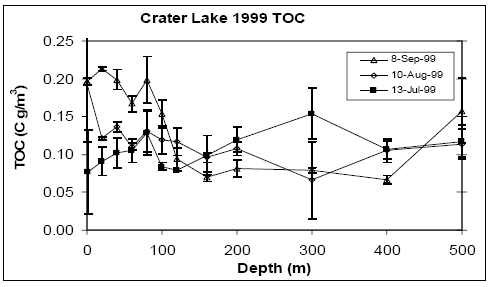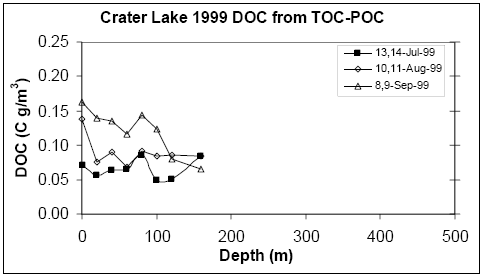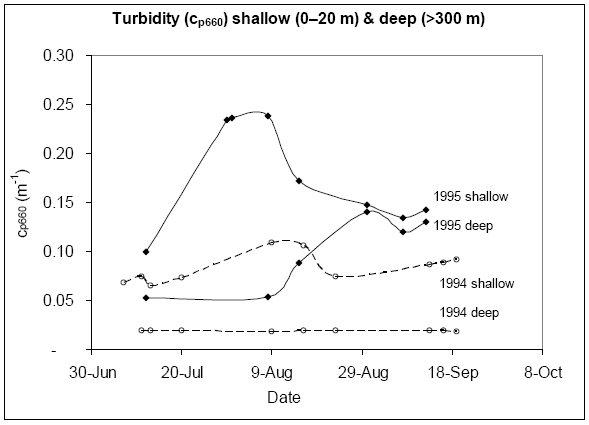Figure 8A. Crater Lake particulate organic carbon (POC, C g m-3) versus depth, 1999. POC was derived from 2 m binned cp660 data (SeaTech transmissometer). Calculation: POC = (cp660+0.024-X)/0.032)/83.3 (proxy equation from Boss et al., this issue, but X was adjusted on each date to match POC over 300–500 m for all dates). Photic zone particulate carbon appears to increase over the course of the summer.
Figure 8B. Crater Lake Total Organic Carbon (TOC) versus depth, 1999. TOC (carbon g m-3) in whole water samples was determined from three analytical replicates with a Shimadzu TOC-5000 (error bars are +/- S.E.).
Figure 8C. Crater Lake Dissolved Organic Carbon (DOC) versus depth, 1999. DOC calculated by difference (TOC-POC). Because no replicate samples were collected and analytical replicates for TOC were noisy, only the values above 200 m are plotted. DOC concentration appears to peak near 80 m, and to increase in the photic zone from July through September, consistent with a summer increase in CDOM observed in 2001 by Boss et al. (this issue).
Figure 9B. Crater Lake turbidity (cp660) reached unusual levels during summer 1995 compared to 1994 (a typical year), coincident with high precipitation and runoff during Spring and Summer 1995 (see caption for Figure 10A). Both the surface and deep water (averages for 0–20 m and 300 m plotted) were elevated in early July and went much higher at the surface during the days after the 25 July thunderstorm and appears to have reached the bottom 2–4 weeks after the storm.





